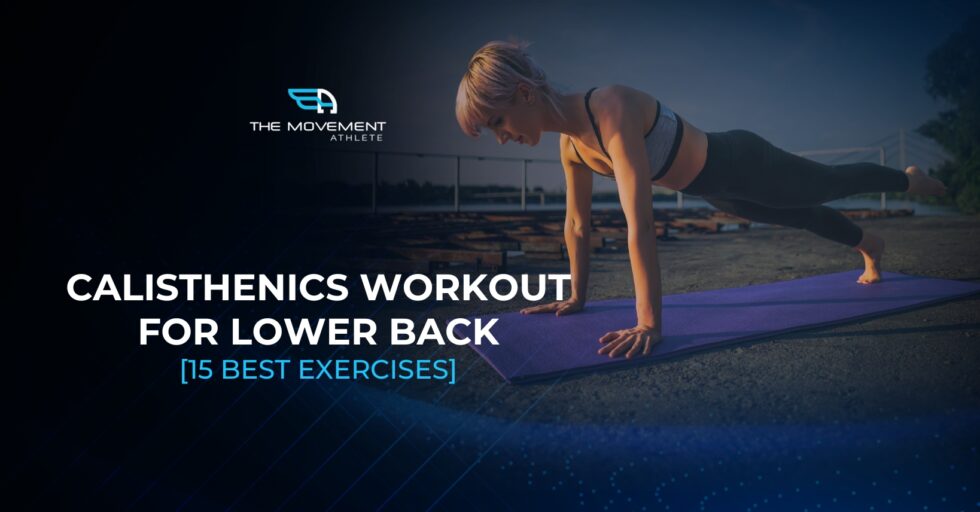
Diving into calisthenics for lower back strength is a fantastic choice! You’ve probably already noticed how these exercises offer so much flexibility and effectiveness.
Lower back calisthenics workouts are not just about getting more robust; they’re about moving better, standing taller, and saying goodbye to that nagging back pain that can throw a wrench in your day.
Let’s not forget that a solid core and a sturdy back are the cornerstones of every movement.
The Movement Athlete platform does a great job of it with its focus on foundational movements. Building strength progressively isn’t just smart; it’s sustainable. This approach ensures that you build a balanced body and are less injury-prone as you get stronger.
Here are the nine fundamentals that The Movement Athlete covers:
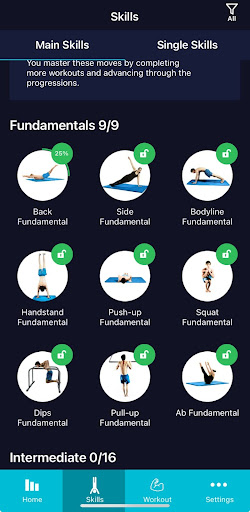
So, let’s get into some exercises that align with these principles and will strengthen your lower back. 👇
✨15 Best Calisthenics Exercises for Lower Back
Ready to give your lower back the love and attention it deserves? There are countless calisthenic exercises that promise to target it.
The following 15 workouts are designed to enhance your flexibility, alleviate back pain, and significantly increase your back strength like never before:
1. 🔥 Bridge

The Bridge exercise is a powerhouse for bolstering your lower back, glutes, and hamstrings, directly contributing to improved core stability, reduced back pain, and better posture.
⚡️Basic Movement:
- Start by reclining and lying down. Press down on your heels to raise your hips, ensuring your knees are flexed, and your feet are planted firmly on the floor this posture is momentarily before gradually lowering your hips to the starting position.
- Repeat for 10-15 reps.
Increase challenge: 💪
- Introduce the single-leg bridge by performing the bridge with one leg raised and extended forward, switching legs each rep.
- Increase the hold time at the top of each bridge to intensify the engagement of the glutes and lower back muscles.
Make it easier:👌
- Reduce the height of the hip lift to lessen the intensity while maintaining the core and lower back engagement.
- Perform the exercise with your hands on your hips to provide additional stability and support.
2. 🔥 Reverse Hyperextensions
Reverse hyperextensions are a crucial exercise for strengthening the lower back and glutes, offering a solid way to enhance overall lower body strength.
⚡️Basic Movement:
- Use an exercise bench or table. Lay face down, with your hips at the edge and legs hanging off.
- Lift your legs to create a straight line with your body, engaging your lower back and glutes, then gently lower them back down.
Increase the challenge: 💪
- Add resistance to your lift using ankle weights or a resistance band around your ankles.
- Lift your legs higher (if mobility allows) to increase the range of motion and intensify your lower back and glute engagement.
Make it easier: 👌
- Limit the range of motion by not lifting your legs as high. This modification makes the exercise more manageable while still targeting the essential muscles.
- Perform the exercise on the floor. Lie face down and lift your legs just off the ground, reducing the gravity effect and making the exercise more accessible.
3. 🔥 Arch Ups
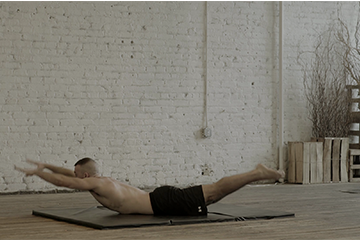
The Arch Ups exercise is a simple yet effective calisthenics movement that targets the lower back, glutes, and hamstrings. It engages and strengthens the entire posterior chain, and it is excellent for improving posture and spinal stability.
⚡️Basic movement :
- Lie face down, arms and legs extended; engage the core, then simultaneously lift arms, legs, and chest off the ground.
- Take a momentary pause at the peak, then gradually revert to the initial stance; replicate this motion for 10-15 repetitions.
Increase the challenge: 💪
- Add light weights or resistance bands to ankles or wrists.
- Do the elevated Superman by placing a ball or towel under the hips for extra range of motion.
Make it easier:👌
- Shorten the duration of holding each arm and leg extension to 2-3 seconds.
- Limit movement by focusing on lifting only the arms or legs individually rather than simultaneously.
4. 🔥 Bird Dog
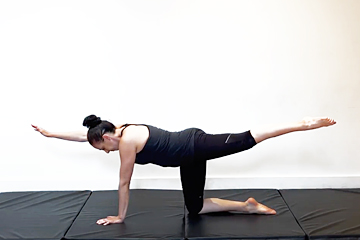
The Bird Dog exercise is a fundamental movement for enhancing core stability, lower back strength, and balance. By requiring simultaneous arm and leg extensions, it engages multiple muscle groups and encourages a strong, stable midsection.
⚡️Basic Movement:
Starting Position: Begin on all fours, aligning wrists under shoulders and knees under hips. Keep your spine neutral and gaze downward.
- Extend Arm and Leg: Simultaneously extend one arm forward and the opposite leg back, aiming to keep them parallel to the floor. Hold this position briefly, then return to the starting position and switch sides.
Increase the challenge: 💪
- Extend the duration of each hold to intensify the core and lower back engagement.
- Incorporate ankle weights or hold light dumbbells to increase resistance and further challenge your stability.
Make it easier:👌
- Reduce the hold time in the extended position to lessen the intensity.
- Limit the height or length of your extensions, focusing on maintaining balance and control without fully extending the arm and leg.
5. 🔥 Plank with Leg Lift
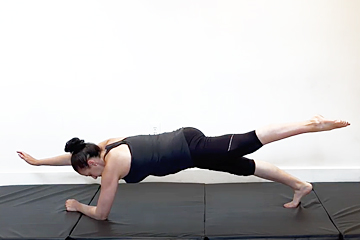
The plank with leg lift is a core strengthening exercise that adds a leg lift to the traditional plank. It targets the abdominals, lower back, glutes, and hamstrings.
⚡️Basic Movement:
- Start in a plank position with hands and knees on the ground, wrists under shoulders, and knees under hips.
- Activate your core muscles, ensuring your spine remains in a neutral position, your head is aligned, and your gaze is directed toward the floor. Extend one arm and the contralateral leg simultaneously while maintaining balance and stability.
Increase the challenge:💪
- Extend hold time for the lifted leg and lift the legs higher, intensifying core engagement.
- Add ankle weights or use an unstable surface for enhanced resistance and stability demands.
Make it easier:👌
- Shorten the range of motion and slow down movements for better form.
- Perform on stable surfaces, reduce reps, and take breaks as needed.
6. 🔥 Side Plank with Leg Lift
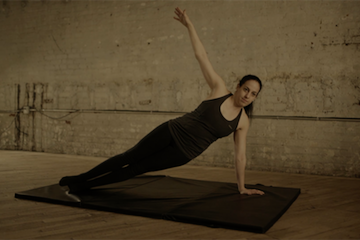
Start in a side plank position, then slowly lift your top leg without losing your balance. Hold, then lower the leg. Repeat on the other side. This exercise targets the obliques, glutes, and lower back.
⚡️Basic Movement:
- Begin in a side plank position, supporting your body on one forearm and the side of your bottom foot, maintaining a straight line from head to heels.
- Activate your core to stabilize your lower back. Elevate your upper leg while ensuring alignment with your body.
Increase the challenge:💪
- Extend the hold time for each leg lift to enhance endurance and muscle engagement.
- Lift the leg higher to intensify the workout for the glutes and obliques.
Make it easier:👌
- Limit the duration of the leg lift hold to reduce intensity while maintaining engagement.
- Opt for a stable surface instead of an unstable one for better support and balance.
7. 🔥 Hip Hinge (Good Mornings)
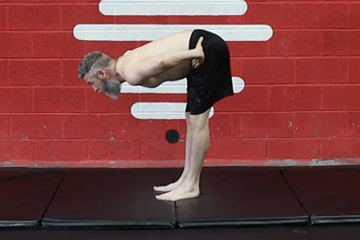
⚡️Basic movement:
- Stand with your feet separated at hip width and knees slightly flexed, placing your hands on your hips or sides.
- Engage core muscles, maintain a straight back and neutral spine, then push hips back while bending at the hips and keeping a slight knee bend. Lower your upper body forward until you feel a stretch in your hamstrings, then return to the initial position by contracting the glutes and pushing the hips forward.
Increase the challenge:💪
- Increase the challenge by incorporating weights or resistance bands to amplify the demand on your lower back and hamstrings
- Perform on an unstable surface to enhance core stabilization and engage additional stabilizing muscles, increasing the difficulty of the exercise.
Make it easier:👌
- Use lighter or no weights to reduce the intensity and allow for a more manageable workout.
- Opt for a stable surface to provide better support and stability, decreasing the demand on the lower back and hamstrings.
8. 🔥 Pelvic Tilts
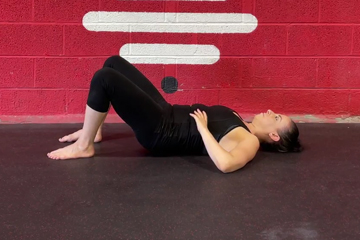
Pelvic tilts are a basic exercise that involves gently rocking the pelvis forward and backward on the back, standing, or on all fours. This movement engages and strengthens the abdominal and lower back muscles by promoting flexibility in the lower spine and hips.
⚡️Basic Movement :
- Recline your back with your knees flexed and your feet resting firmly on the floor, ensuring you’re comfortable.
- Perform pelvic tilts by flattening your lower back to the floor, tilting your pelvis forward, and then arching your lower back by tilting your pelvis backward; repeat this tilting motion to engage and strengthen the lower back muscles.
Increase the challenge:💪
- Extend hold time in each position to increase muscular endurance and control.
- Use an unstable surface, such as a stability ball or balance cushion, to enhance core stabilization and engage additional stabilizing muscles during the exercise.
Make it easier:👌
- Reduce hold time at each position to make the exercise more manageable for beginners or those with limited strength.
- Perform on a stable surface like the floor to provide better support and stability, reducing the demand on the lower back muscles.
9. Swiss ball Back Extensions
Swiss ball back extensions strengthen the lower back and improve spinal stability by engaging the erector spinae and core muscles. Performed by lying on a Swiss ball and lifting the upper body to align with the spine, this exercise enhances posture, reduces back pain risk, and increases lumbar flexibility.
⚡️Basic Movement:
- Position yourself on the Swiss ball, ensuring your knees are flexed and your feet are securely grounded on the floor. while engaging your core muscles to maintain stability.
- Lower your upper body towards the floor while maintaining control, then return to the starting position. Perform 10-15 repetitions for 2-3 sets, focusing on controlled movements and proper form to strengthen the lower back muscles.
Increase the challenge: 💪
- Extend arms overhead to increase leverage and engage upper body muscles while stabilizing the core.
- Add resistance with dumbbells or resistance bands to intensify the workload on the lower back and surrounding muscles, enhancing strength and endurance.
Make it easier: 👌
- Cross arms over the chest or place them behind the head to reduce leverage and focus solely on engaging the lower back muscles.
- Limit the range of motion by performing smaller movements, which is particularly beneficial for individuals with limited flexibility or mobility.
10. 🔥 Prone Cobra

The Prone Cobra is a floor exercise that strengthens the back, shoulders, and glutes muscles.
⚡️Basic Movement:
- Lie face down on the floor with your legs extended and arms positioned alongside your body, palms facing downward.
- Activate your core and gluteal muscles, then elevate your chest and torso from the floor, maintaining straight arms and relaxed shoulders, to experience a mild stretch in your lower back.
Increase the challenge: 💪
- Incorporate resistance bands: Attach resistance bands to increase the challenge as you raise your chest and arms from the ground., intensifying lower back muscle engagement.
- Extend duration: To enhance muscle endurance and strength, hold the lifted position for a longer duration, gradually increasing to 30 seconds or more.
Make it easier:👌
- Modify arm positioning: Bend elbows and keep hands closer to shoulders to reduce the lever arm, making the exercise easier on the lower back muscles.
- Reduce range of motion: Limit the range of motion by lifting just enough to feel the contraction in the lower back, avoiding strain or overextension of the spine.
11. 🔥 Dead Bug

The Deadbug exercise strengthens the core muscles, which are crucial for maintaining proper posture and stability during calisthenics movements. A strong core reduces the risk of lower back injuries by ensuring the spine is properly supported during exercise.
⚡️Basic Movement:
- Start with a 5-10 minute cardio warm-up, then perform 2-3 sets of 10-15 reps of the Dead Bug Exercise, focusing on core engagement and coordinated breathing.
- Progress by extending limbs further or holding positions longer. Cool down with gentle lower back stretches. Aim for 2-3 sessions weekly, adjusting intensity as needed. Seek professional guidance if uncertain.
Increase the challenge:💪
- Extend limbs further from the body and hold the extended position for longer durations.
- Incorporate resistance with dumbbells or bands, perform slow and controlled movements, and introduce isometric contractions throughout.
Make it easier: 👌
- Shorten limb extension and bend knees at a 90-degree angle to reduce strain on the core muscles.
- To make the exercise more manageable, limit the range of motion, decrease hold time, and opt for lighter resistance.
12. 🔥 Swiss Ball Pike
By engaging the core and requiring balance, the Swiss Ball Pike indirectly activates the lower back muscles, contributing to a well-rounded calisthenics workout that enhances posture, stability, and overall back health.
⚡️Basic Movement:
- Perform 2-3 sets of 8-12 Swiss ball pikes, focusing on controlled movements and proper breathing. This exercise should be complemented by a warm-up of 5-10 minutes of light cardio.
- After completing the exercise, incorporate a cool-down session involving stretches for the lower back, hamstrings, and hip flexors. Aim to complete this routine 2-3 times weekly for optimal results.
Increase the challenge:💪
- Extend legs further and elevate hips higher to intensify the challenge of the Swiss ball pike exercise. Hold the pike position for longer durations and incorporate dynamic knee tucks or leg lifts for increased difficulty.
- To further enhance the challenge, add resistance to your lower back and perform the movement slowly and with control. Utilize an unstable surface and gradually increase repetitions or sets to challenge your muscles and continuously improve your strength.
Make it easier: 👌
- Shorten the distance to the ball and keep your hips lower to decrease the challenge of the Swiss ball pike exercise.
- Additionally, reduce hold time, opt for lighter resistance, and focus on breathing while maintaining proper form. Adjust reps or sets and use a stable surface for a more manageable workout.
13. 🔥 Lying Leg Raises
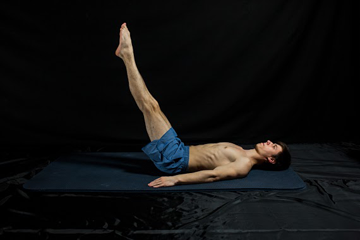
Lying leg raises, while primarily targeting the lower abdominals, also engage the lower back muscles as they stabilize the spine during the leg lifting and lowering movements.
⚡️Basic Movement:
- Warm up with 5-10 minutes of light cardio, followed by 2-3 sets of 10-15 reps.
- Lie flat on your back with your legs stretched out entirely, activate your core muscles, raise your legs, and carefully lower them while maintaining a flat lower back against the mat. Exhale during the lift and inhale during the lower, and cool down with gentle stretches. Aim for a frequency of 2-3 times per week.
Increase the challenge: 💪
- Add ankle weights or resistance bands, extend legs further, or try to decline leg raises for increased difficulty.
- Slow down the movement, add a pause at the top, increase reps or sets, and incorporate hanging leg raises while maintaining proper form throughout.
Make it easier:👌
- To reduce the difficulty, bend your knees instead of straight legs, limit the range of motion, or support the lower back with your hands or a towel.
- Perform partial leg raises, reduce reps or sets, or try alternative exercises such as using an inclined surface for support. Coordinate breathing with movement, listen to your body, and adjust as needed.
14. 🔥 Swimmers
The swimmer’s exercise helps strengthen the muscles of the lower back, improve spinal stability, and enhance overall core strength. It also promotes coordination and balance. Perform the exercise properly and avoid overarching or straining the lower back.
⚡️Basic movement:
- Begin by lifting the chest, arms, and legs off the ground simultaneously while lying face down, engaging the core throughout the movement.
- Alternately lift one arm and the opposite leg in succession while simultaneously lowering the other side, emphasizing control and correct form. Aim for 10-15 repetitions to enhance lower back and core strength.
Increase the challenge: 💪
- Elevate the difficulty by lifting limbs higher off the ground, extending the hold duration, and increasing the speed of alternating movements.
- Incorporate additional resistance using ankle weights or resistance bands, also unstable surfaces like a stability ball, and focus on unilateral movements while performing more repetitions or sets.
Make it easier:👌
- Modify the exercise to reduce difficulty by keeping limbs closer to the ground, limiting the range of motion, and slowing down the movement.
- Decrease hold duration, lower the height of arm and leg lifts, and perform fewer repetitions or sets while considering modifications such as lifting one limb at a time and taking breaks as needed.
15. 🔥 Arch Ups

Arch ups are a bodyweight exercise targeting the muscles in the lower back, glutes, and hamstrings. They are beneficial for strengthening the posterior chain and improving posture.
⚡️Basic movement:
- Begin by lying face down on a mat and lifting the chest and upper body off the ground while squeezing the glutes.
- Hold briefly at the top before lowering back down to the starting position, focusing on strengthening the lower back muscles and improving posture.
Increase the challenge: 💪
- Extending the hold time at the top, lifting the chest and upper body higher off the ground, and engaging the glutes more forcefully will increase the challenge.
- Add resistance with weights or resistance bands, increase the number of repetitions or sets performed, and gradually progress by increasing hold duration, the height of lift, or resistance used while maintaining proper form.
Make it easier:👌
- Modify the exercise to reduce difficulty by reducing the range of motion, slowing down alternating movements, and shortening the duration of holding each position.
- Decrease the height of lifting the chest, arms, and legs, perform fewer repetitions or sets, and take breaks as needed while focusing on controlled movements and proper form.
To learn more about calisthenics exercises for the lower back, read our article: 📍Beginner’s Guide to Training Lower Back with Calisthenics
🏆Benefits of Lower Back Exercises
Diving into targeted exercises can really amp up the strength, flexibility, and endurance of those crucial lower back muscles, paving the way for better posture and smoother mobility.
Here’s a quick rundown of the benefits you’ll enjoy by weaving lower back exercises into your regular fitness routine:
Lower back exercises offer several key benefits:
- ✊ Alleviate and prevent lower back pain.
- ✊ Improve posture.
- ✊ Boost core stability.
- ✊ Enhance mobility and flexibility in the spine and hips.
- ✊ Increase overall physical performance.
- ✊ Reduce the risk of injuries during physical activities.
These exercises contribute to a stronger, more balanced body, enhancing quality of life.
Learn the top benefits of calisthenics exercises with our article 📍The Top Benefits of Calisthenics for Reducing Lower Back Pain
🧐Frequently Asked Questions:
🔎How can I prevent lower back injuries while performing calisthenics exercises?
To prevent lower back injuries, maintain proper form, engage your core muscles, and avoid sudden movements or jerks. Gradually increase the intensity of your exercises and listen to your body’s signals.
🔎What should I do if I experience discomfort or pain in the lower back during calisthenic exercises?
If you experience discomfort or pain during calisthenics exercises for the lower back, stop the exercise immediately and consult with a healthcare professional. It is essential to tackle fundamental problems and modify your exercise routine accordingly to prevent further injury.
🔎How often should I do a calisthenics workout for my lower back?
The frequency of calisthenics workouts for the lower back can vary depending on individual fitness levels and goals. However, aiming for 2-3 sessions per week is a good starting point.
🔎Can calisthenics workouts help improve posture and alleviate lower back strain?
Yes, calisthenics workouts that target the lower back muscles can help improve posture and alleviate strain by strengthening the muscles that support the spine.
💥Conclusion
Jumping into calisthenics to boost your lower back strength is a brilliant move that pays off in more ways. These exercises not only bring a ton of flexibility to your workout routine but also pack a punch in terms of effectiveness.
But it’s not all about brute strength. Embracing lower back calisthenics exercises means embracing a life where you move more fluidly, stand taller, and wave goodbye to the kind of back pain that puts a damper on your day. Remember, a robust core and a sturdy back are the pillars of every movement we make.💯
The Movement Athlete shines by emphasizing foundational movements that build strength in a progressive, sustainable way. This isn’t just smart; it ensures that as you grow stronger, you also craft a more balanced body less prone to injuries.
Take the assessment now and get a detailed, personalized training plan you can use immediately.
